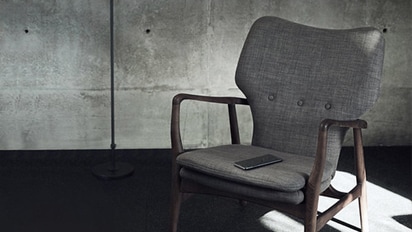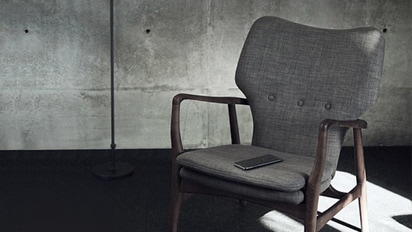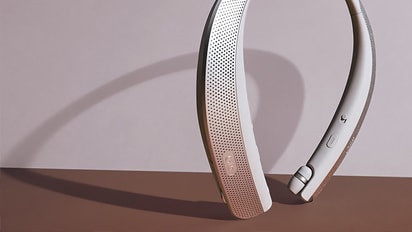Depending on the model of your Blu-ray Player, you may have several options for connecting to external devices. If your Blu-ray Player is built-in to a Sound Plate or Home Theater System, you may also have some options to input audio or video.
Select the type of connection you would like more information about.
HDMI (High-Definition Multimedia Interface) is a method of transmitting sound and/or video from your Blu-ray player to your TV, from your ARC (Audio Return Channel) compatible TV to your Blu-ray Player**, or from another HDMI capable device to your Blu-ray Player** (pass-through).
**Stand-alone Blu-ray Players will not support ARC or HDMI pass-through. If your Blu-ray player is built-in to a Sound Plate or Home Theater System, check the specifications of your model to determine if it supports either option.
To connect your Blu-ray Player using HDMI (Out):
- Connect an HDMI cable from the HDMI output on your Blu-ray Player, to the HDMI input on your TV.
- Make sure the both the Blu-ray Player and the TV are powered On.
- Set the Input on your TV to match the input you plugged the HDMI cable into.
- That's all there is to it! You're done.
Possible Options for Home Theater/Sound Plate
To connect your Blu-ray Player using HDMI (ARC):
Note: Simplink will need to be enabled for ARC to function.
- Make sure both the Blu-ray Player and the TV are powered On.
- Connect an HDMI cable from the HDMI (ARC) output on your TV (usually HDMI 1), to the HDMI input slot on the Blu-ray Player.
- Locate the Sound menu on your TV (differs by model).
- Select Sound Out from the Sound menu.
- Choose Audio Out(Optical/HDMI ARC)from the list.
- Your Blu-ray Player should automatically switch to ARC mode.
To use HDMI pass-through with your Blu-ray Player:
- Connect an HDMI cable from the HDMI OUT port of the other device to the HDMI IN port of the Blu-ray Player. Be sure to check the label carefully as this type of connection is not common.
- Connect the Blu-ray Player to your TV as described above.
- Use the Function button on your remote to choose the input
- Select Sound Out from the Sound menu.
- Choose Audio Out(Optical/HDMI ARC)from the list.
- Your Sound Plate should automatically switch to ARC mode.
USB is a common connection type used for external hard drives/flash drives, cameras, and smart phones/tablets. Media files from these devices (videos, pictures, or music) can be played on most Blu-ray Players.
Note: Some USB devices may not be compatible depending on formatting and size, check your owner's manual for specific restrictions.
To connect your Blu-ray Player using USB:
- Plug the USB cable from your USB device into the Blu-ray Player.
- Use Smart Share to access and play your media files.
- The Smart Share article also provides some troubleshooting steps in case things don't work properly.
Digital Optical cables deliver crystal clear sound using fiber optic technology (uses light to transmit data).
Note: Most Blu-ray Player models support optical output, but it is best to consult the manual to be sure.
Optical input will only be available if your Blu-ray Player is built-in to a home theater device, and only on select models (consult the user's manual).
To connect your Blu-ray Player using Digital Optical (Out):
- Connect an optical cable from the optical output on your Blu-ray Player, to the optical input port on the home theater device.
- Make sure the Blu-ray Player and the home theater device are both powered On.
- Change the input on the home theater device to match the port you plugged the optical cable in to. On LG Home Theaters, Sound Plates, and Sound Bars, use the Function button either on the unit or on the remote. For other manufacturer's devices, consult the user's manual (usually Function, Input, or Source).
- Play a disc or streaming content (if your Blu-ray Player supports Smart TV).
- If you do not hear sound when a title is playing, check the volume level. The volume indicator is different depending on the device manufacturer, for LG devices ensure the volume level is above 10; for other manufacturers, consult the user's manual.
Possible Options for Home Theater/Sound Plate
To connect your Blu-ray Player(built-in to a Home Theater system or Sound Plate) using Digital Optical (In):
- Connect an optical cable from the optical output on your output device(cable box, video game system, etc.), to the optical input slot on the Blu-ray Player.
- Make sure the Blu-ray Player and the output device are both powered On.
- Change the input on the Blu-ray Player to match the port you plugged the optical cable in to. Use the Function button either on the unit or on the remote to cycle through inputs.
- Play some form of media from the output device.
- If you do not hear sound when media is playing, check the volume level. Ensure the volume level is above 10.
Component video cables (Red, Blue, Green, White and Red) deliver analog HD video with stereo sound from your Blu-ray Player to your TV.
Note: The Red and White cables should be visually separated, or next to each other on one side of the cabling. These are the stereo audio cables.
To connect your Blu-ray Player using Component video:
- Connect the cables, matching the colors, from the Component video output on the Blu-ray Player to the Component video input on the TV.
- Make sure both the Blu-ray Player and the TV are powered On.
- Change the input on the TV to match the port you plugged the Component video cables into. There should be a button, either on the TV or on the remote, called Input or Source, which will cycle between inputs (or allow you to choose a specific one).
- Play a disc or streaming content (if your Blu-ray Player supports Smart TV).
- If you do not hear sound when a title is playing, check the volume level. The volume indicator is different depending on the device manufacturer, for LG devices ensure the volume level is above 10; for other manufacturers, consult the user's manual.
RCA cables (Red, White, and Yellow) deliver analog video with stereo sound from your Blu-ray Player to your TV, or if your Blu-ray Player is buit-in to a Home Theater system you may be able to connect from another device to your Blu-ray Player.
Note: Most Blu-ray models do not support RCA input, but it is best to consult the manual to be sure.
To connect your Blu-ray Player using RCA(Composite Video) (Out):
- Connect the cables, matching the colors, from the RCA output on the Blu-ray Player to the RCA input on the TV.
- Make sure both the Blu-ray Player and the TV are powered On.
- Change the input on the TV to match the port you plugged the RCA cables into. There should be a button, either on the TV or on the remote, called Input or Source, which will cycle between inputs (or allow you to choose a secific one).
- Play a disc or streaming content (if your Blu-ray Player supports Smart TV).
- If you do not hear sound when a title is playing, check the volume level. The volume indicator is different depending on the device manufacturer, for LG devices ensure the volume level is above 10; for other manufacturers, consult the user's manual.
Possible Options for Home Theater/Sound Plate
To connect your Blu-ray Player(built-in to a Home Theater system) using RCA audio (In):
- Connect the cables, matching the colors, from the RCA output on the output device(cable box, video game system, etc.), to the RCA input on the Blu-ray Player.
- Make sure both the Blu-ray Player and the output device are powered On.
- Change the input on the Blu-ray Player to match the port you plugged the RCA cables into. There should be a button, either on the TV or on the remote, called Function, Input, or Source, which will cycle between inputs.
- Play some media from the output device.
- If you do not hear sound when a title is playing, check the volume level. Ensure the volume level is above 10.
Digital Coaxial cables deliver equivilent sound to optical (TOSLINK) cables, using coaxial cable with RCA connectors.
Note: Most current TV models do not support digital coaxial output, but it is best to consult the manual to be sure.
To connect your Blu-ray Player using Digital Coaxial (Out):
- Connect a digital coaxial cable from the digital coaxial output on your Blu-ray Player, to the digital coaxial input port on the home theater device.
- Make sure the Blu-ray Player and the home theater device are both powered On.
- Change the input on the home theater device to match the port you plugged the digital coaxial cable in to. On LG Home Theaters, Sound Plates, and Sound Bars, use the Function button either on the unit or on the remote. For other manufacturer's devices, consult the user's manual (usually Function, Input, or Source).
- Play a disc or streaming content (if your Blu-ray Player supports Smart TV).
- If you do not hear sound when a title is playing, check the volume level. The volume indicator is different depending on the device manufacturer, for LG devices ensure the volume level is above 10; for other manufacturers, consult the user's manual.
Possible Options for Home Theater/Sound Plate
To connect your Blu-ray Player(built-in to a Home Theater system or Sound Plate) using Digital Coaxial (In):
- Connect a digital coaxial cable from the digital coaxial output on your output device(cable box, video game system, etc.), to the digital coaxial input port on the Blu-ray Player.
- Make sure the Blu-ray Player and the output device are both powered On.
- Change the input on the Blu-ray Player to match the port you plugged the digital coaxial cable in to. Use the Function button either on the unit or on the remote to cycle through inputs.
- Play some form of media from the output device.
- If you do not hear sound when media is playing, check the volume level. Ensure the volume level is above 10.












